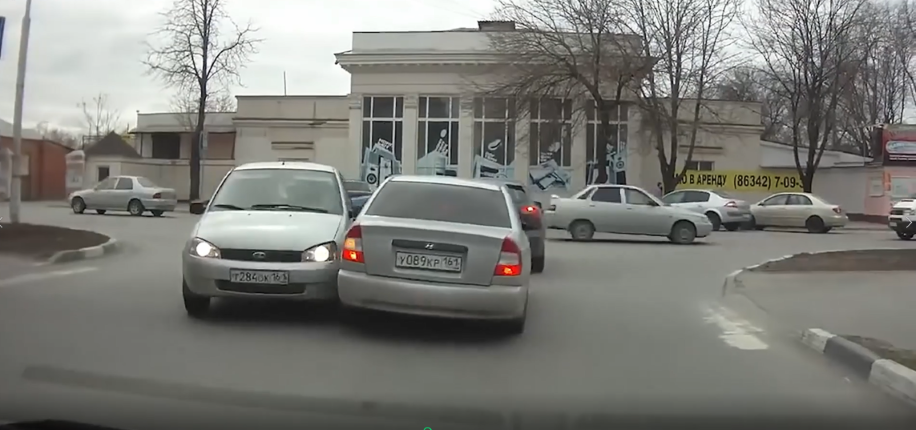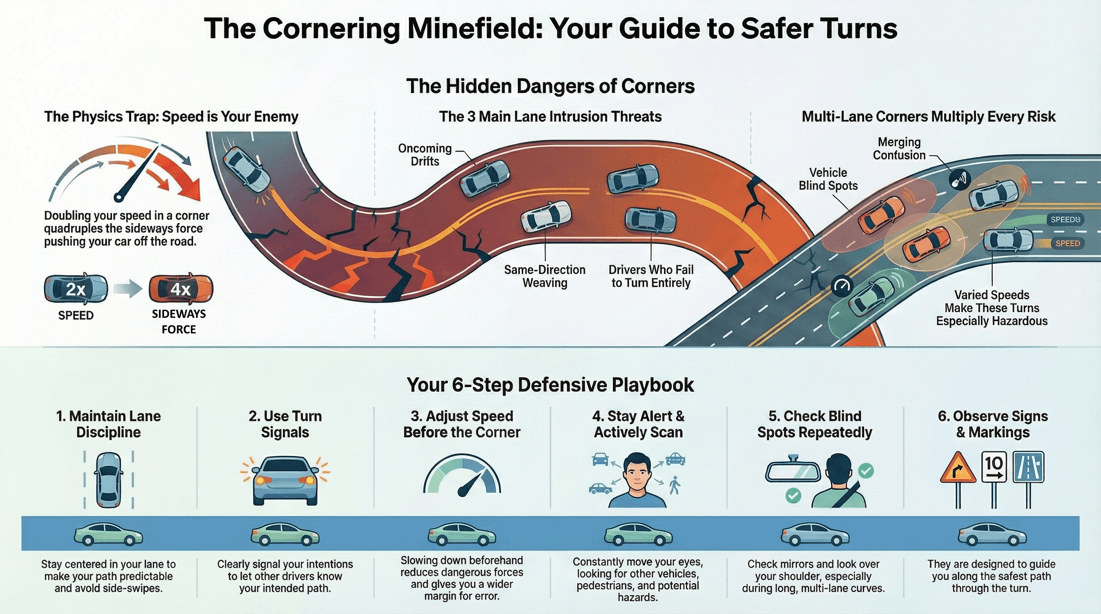
Corner
Not keeping Lane: ⮟ 📹 Oncoming ⮟ 📹 Same Direction ⮟ 📹 Not Turning
☠️ Alert:


Not keeping Lane:
📹 Oncoming
📹 Same Direction
📹 Not Turning
☠️ Dangers of multi-lane corners
Lane Merging Confusion
Risk of Side-Swipes: Drivers might inadvertently drift into adjacent lanes, leading to side-swipe collisions. Improper Merging: Vehicles attempting to merge into other lanes might misjudge the speed and distance of other vehicles, causing accidents.
Blind Spots
Limited Visibility: Larger vehicles, such as trucks, have significant blind spots that can obscure smaller vehicles or pedestrians, increasing the risk of collisions. Obstructed View: Vehicles in adjacent lanes can block the view of important traffic signals, signs, or potential hazards.
Speed Variations
Inconsistent Speeds: Vehicles in different lanes might travel at varying speeds, making it difficult to predict the movements of other drivers and increasing the likelihood of collisions. Accelerating Out of Turns: Drivers may accelerate too quickly out of a corner, losing control and potentially causing an accident.
Incorrect Lane Usage
Improper Lane Choice: Drivers may be in the wrong lane for their intended turn, leading to last-minute lane changes that can cause accidents. Lane Discipline Issues: Some drivers may not follow lane discipline, weaving in and out of lanes or not maintaining a steady lane position through the corner.
Road Surface Conditions
Slippery Surfaces: Multi-lane corners are more susceptible to oil, water, or ice accumulation, making the road surface slippery and reducing tire traction. Uneven Surfaces: Potholes or uneven road surfaces in multi-lane corners can cause loss of vehicle control.
Inadequate Signage
Confusing Signage: Inadequate or confusing road signs can lead to driver indecision and erratic movements, increasing the risk of accidents. Lack of Lane Markings: Poorly marked lanes can result in lane discipline issues and collisions.
Increased Traffic Density
High Traffic Volume: Multi-lane corners often experience high traffic volumes, leading to congestion and increased risk of rear-end collisions. Mix of Vehicle Types: The presence of different vehicle types, such as cars, trucks, and motorcycles, with varying speeds and sizes, can complicate navigation through multi-lane corners.
Driver Behavior
Aggressive Driving: Some drivers might speed or engage in aggressive maneuvers, increasing the risk of accidents. Inattentive Driving: Distracted or inattentive drivers may not navigate multi-lane corners safely, leading to collisions.
Pedestrian and Cyclist Risks
Crossing Hazards: Pedestrians and cyclists crossing multi-lane roads at corners face increased risk due to multiple lanes of traffic. Visibility Issues: Pedestrians and cyclists may be less visible to drivers in multi-lane corners, especially during low-light conditions.
Safety Tips for Multi-Lane Corners
Maintain Lane Discipline: Stay in your lane and avoid unnecessary lane changes. Use Turn Signals: Clearly signal your intentions to other drivers. Adjust Speed: Slow down when approaching and navigating multi-lane corners. Stay Alert: Be aware of other vehicles, pedestrians, and cyclists. Check Blind Spots: Regularly check mirrors and blind spots before changing lanes or turning. Observe Signage: Follow road signs and lane markings carefully.